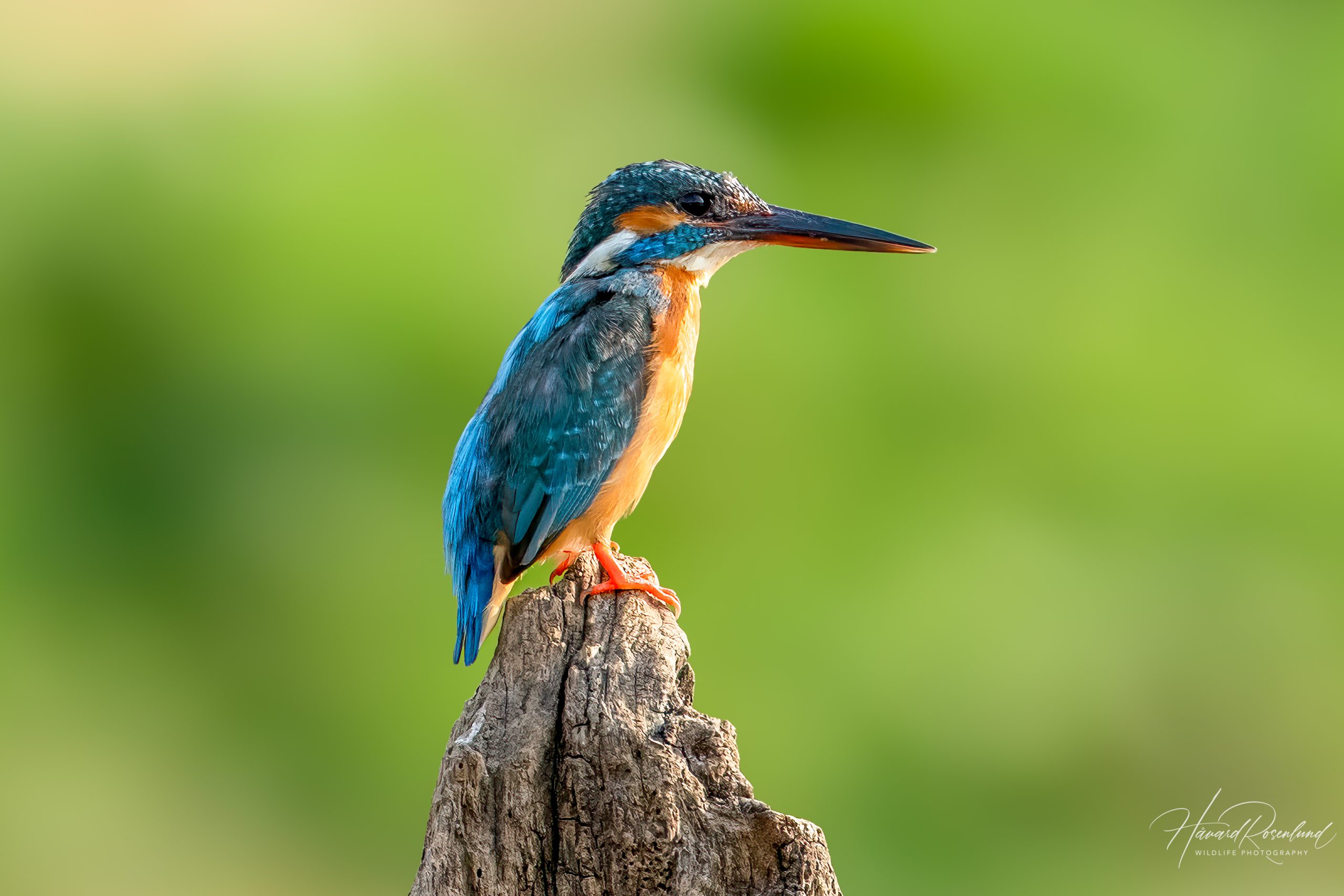Description
The common kingfisher (Alcedo atthis), also known as the Eurasian kingfisher, is a small, brightly colored bird found across Europe, Asia, and North Africa. Measuring approximately 16-18 cm (6.3-7-1 in) in length, with a wingspan of 25 cm (10 in), and weighing around 20-46 grams (0.7-1.6 oz), the kingfisher is easily recognizable by its vivid blue upperparts, orange underparts, and a long bill. Males and females are similar in appearance, although females typically have a reddish lower mandible. Juveniles resemble adults but with duller colors and greenish-blue upperparts. The common kingfisher can be distinguished from similar species, such as the blue-eared kingfisher (Alcedo meninting) and Blyth’s kingfisher (Alcedo hercules), by its distinct orange ear patch.
Diet & Habitat
Common kingfishers inhabit a variety of freshwater environments, including rivers, lakes, streams, and ponds, often with clear, slow-moving or still water. They are also found in coastal areas, estuaries, and mangroves. Their diet primarily consists of small fish, such as minnows and sticklebacks, but they also consume aquatic insects, crustaceans, and small amphibians. Kingfishers hunt by perching silently above the water, then diving swiftly to catch their prey with their sharp beaks. They are known for their remarkable precision and can often be seen hovering briefly before plunging into the water.
Migration
While many common kingfishers are resident birds, some populations exhibit migratory behavior. Birds in northern Europe and Asia tend to migrate southwards during the winter to avoid freezing waters, traveling to regions with milder climates. Migration typically occurs from September to October, and they return to their breeding grounds around March to April. The extent of migration can vary depending on local environmental conditions and food availability.
Nesting
The breeding season for the common kingfisher generally spans from March to August. They are solitary nesters, with pairs forming territories along suitable water bodies. Pairs will fiercely defend their territories from intruders, often engaging in aerial chases. The nest is a tunnel excavated into a riverbank or sandy soil, leading to a chamber where the eggs are laid. Females typically lay 5-7 glossy white eggs, which both parents incubate for about 19-21 days. Once hatched, the chicks are fed by both parents and fledge approximately 23-27 days later. Kingfishers may have two to three broods per season, depending on food availability and environmental conditions.
Status
The common kingfisher is currently listed as least concern by the IUCN Red List, indicating that it is not considered at immediate risk of extinction. However, it faces several threats, including habitat destruction, pollution, and climate change. Changes in water quality and availability of prey due to agricultural runoff, urban development, and deforestation can negatively impact their populations. Conservation efforts focus on preserving and restoring aquatic habitats and ensuring clean, unpolluted water bodies.











